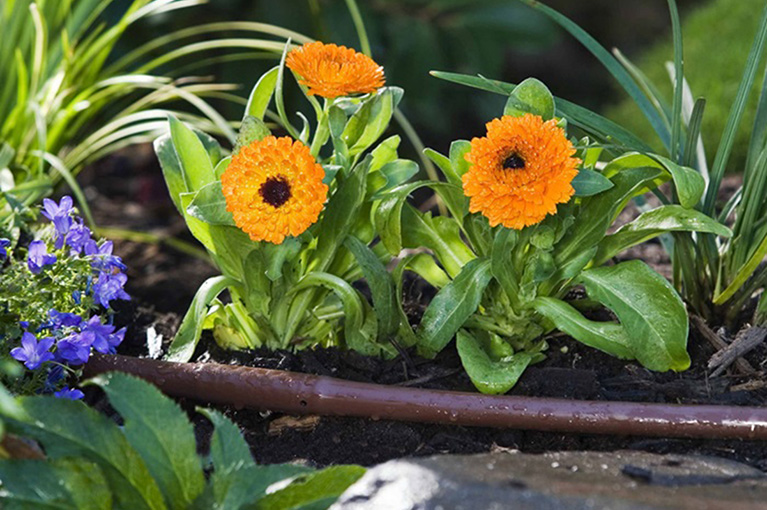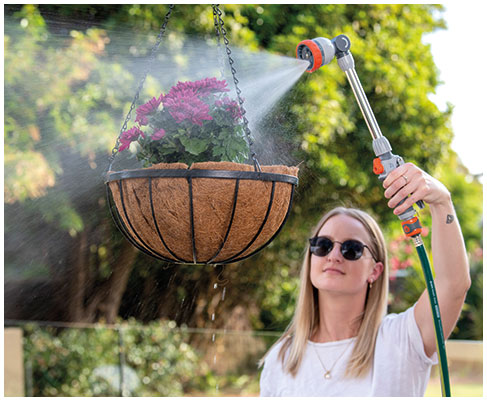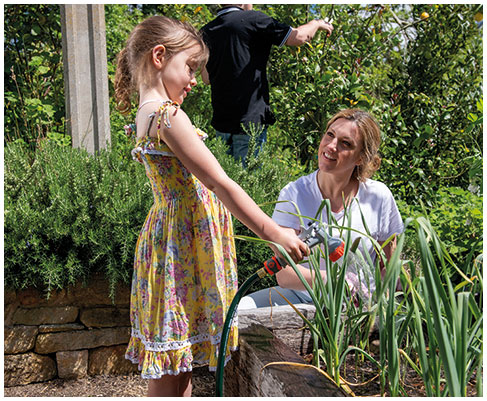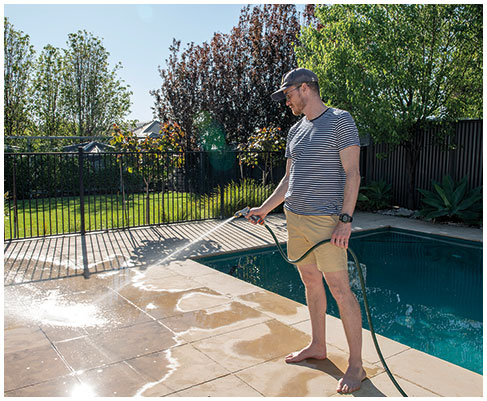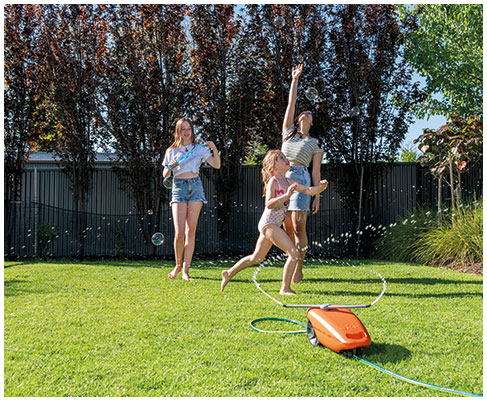Creating a lush and lively garden during the summertime is what every green thumb hopes for. Having a sense of control, consistency and uniformity over your garden is like having a sixth sense because you know exactly what your garden needs and when, but it isn’t always easy.
Creating an irrigation system that will work for your plants and help establish a flourishing garden can be hard to figure out on your own. Whether you need to find out your water flow, understand how to use drip irrigation properly or select the right pop up sprinklers – you can take the irritation out of irrigation with these helpful tips and tricks.
Determine your water flow
Knowing how your sprinkler system works during the hotter months is crucial to getting the best out of your watering. Before you get started on a new sprinkler system, it’s important to calculate your flow rate. Your flow rate determines the number of pop up sprinklers you should use at once which is dependent on how much water your home can supply. As individual pop up sprinklers have differing flow rates, make sure you calculate your water flow rate buy you buy your sprinklers.
Water flow is the number of litres per minute that comes out of your tap, whereas water pressure is the amount of force. The bucket test will teach you how to find your flow rate and all you need is a 9 litre bucket, your outdoor tap and a timer. It’s best to test the flow rate during peak water usage for accurate results, so grab your bucket and turn the tap to full and time how long it takes to reach capacity. If you’ll be using a tap timer or pressure reducer to assist with irrigation, use them while doing this test! The average water pressure for a residential home is 500kpa (kilopascals), you can check this by contacting your local council area or hiring a plumber. In most cases you’ll be able to determine if your home has a high water pressure, when using an irrigation system it’s essential to install a pressure reducer.
Picking the right tap timer or water automation product
There are many types of water automation products available, before you decide which one to buy you should consider:
- how many zones you want to irrigate
- the level of programming you require
- run times
- ease of use
Whether it’s a manual, automatic or a fully automated system, we have the solution for you.
Take the quick tap timer quiz to find the right tap timer for you.
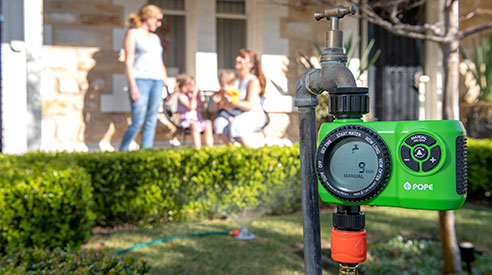
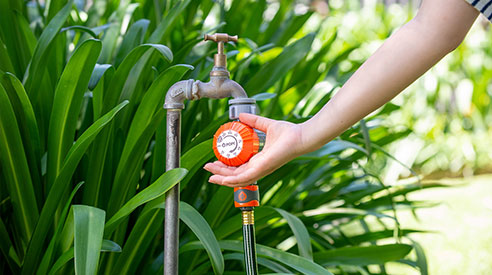


Perfect your drip irrigation system
Drip systems aim to minimize water wastage by targeting the root system and promoting strong root growth. You can purchase drippers individually and insert them directly into poly tubing at the root bowl of the plants. A more efficient system is to use Drip Eze, which has drippers inserted into the tubing automatically. The even spread and flow rate of this system creates a ‘mattress’ of water under your garden bed.
The flow test will also help you plan how much Drip Eze (drip line) you’d require in each zone, as the tube contains emitters that distribute water at a certain rate, usually 2 litres per hour. This is also applicable for drippers and tricklers as they have varying flow emission rates to suit your garden and flow rate. Remember to always use a filter for your drip irrigation system to prevent particles from blocking drippers – it also helps to clean the filter!
On a sloping block? Not to worry – we all know water flows downhill and the same goes for your irrigation system. Simply install pressure compensating products that allow water to evenly flow through your irrigation system, so your plants can still receive equal amounts of water even on sloping surfaces.
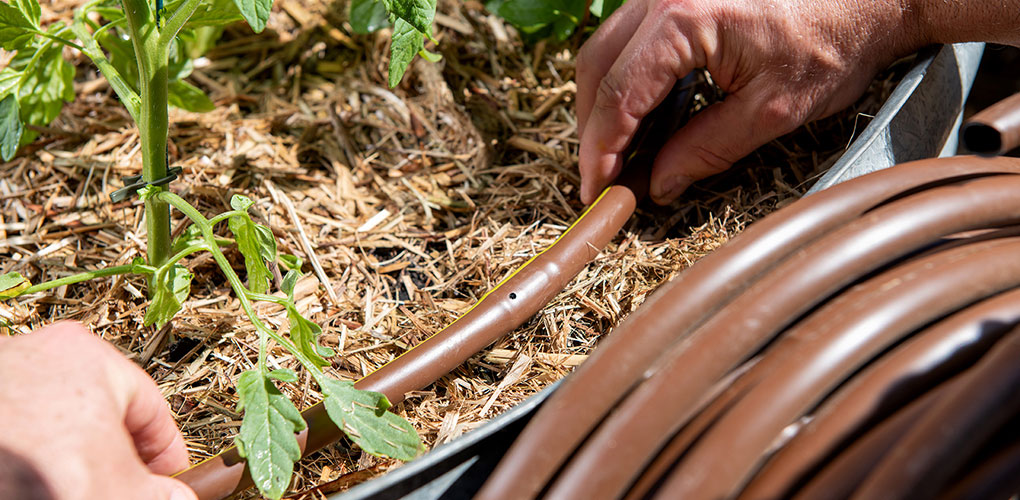
Make light work with pop up sprinklers
Each lawn has its own unique qualities, so finding the right pop up sprinklers for your garden comes down to the length and variety of your lawn. Once you’ve completed the bucket test, you’ll know your flow consumption and be able to choose a new system that best suits your needs. Learn which sprinkler will suit your lawn size.
Start the process by mapping your lawn irrigation area to understand the ideal spray pattern and arc for your garden. Maintain your pop up sprinkler system by regularly trimming grass or vegetation around the heads, cleaning the mesh filter and rinsing it, and looking into the sprinklers annually to inspect any damages or build up.
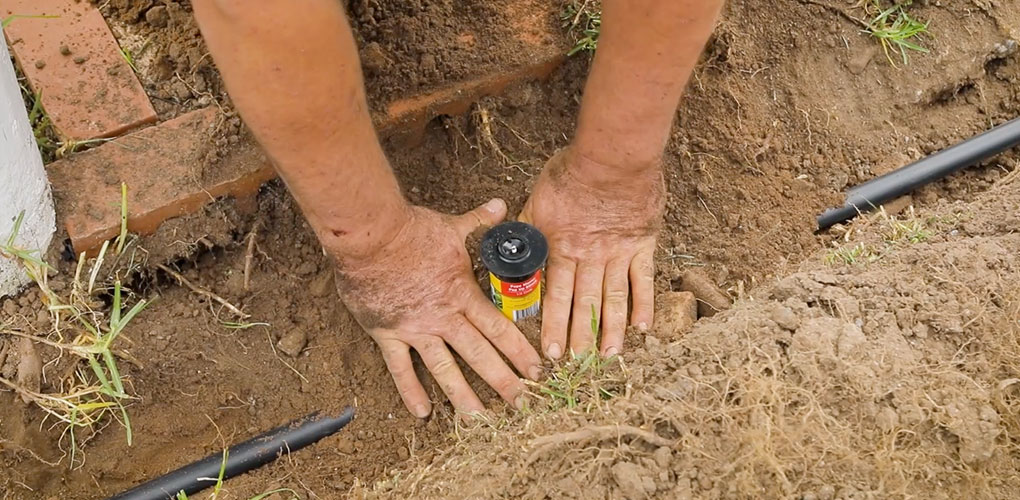
Still need more assistance? Find more irrigation tips and tricks for water automation, drip irrigation systems, pop up sprinklers and DIY guides on the Pope Irrigation website.
Knowing how your sprinkler system works during the hotter months is crucial to getting the best out of your watering. Before you get started on a new sprinkler system, it’s important to calculate your flow rate. Your flow rate determines the number of pop up sprinklers you should use at once which is dependent on how much water your home can supply. As individual pop up sprinklers have differing flow rates, make sure you calculate your water flow rate buy you buy your sprinklers.
Water flow is the number of litres per minute that comes out of your tap, whereas water pressure is the amount of force. The bucket test will teach you how to find your flow rate and all you need is a 9 litre bucket, your outdoor tap and a timer. It’s best to test the flow rate during peak water usage for accurate results, so grab your bucket and turn the tap to full and time how long it takes to reach capacity. If you’ll be using a tap timer or pressure reducer to assist with irrigation, use them while doing this test! The average water pressure for a residential home is 500kpa (kilopascals), you can check this by contacting your local council area or hiring a plumber. In most cases you’ll be able to determine if your home has a high water pressure, when using an irrigation system it’s essential to install a pressure reducer.
There are many types of water automation products available, before you decide which one to buy you should consider:
- how many zones you want to irrigate
- the level of programming you require
- run times
- ease of use
Whether it’s a manual, automatic or a fully automated system, we have the solution for you.
Take the quick tap timer quiz to find the right tap timer for you.




Perfect your drip irrigation system
Drip systems aim to minimize water wastage by targeting the root system and promoting strong root growth. You can purchase drippers individually and insert them directly into poly tubing at the root bowl of the plants. A more efficient system is to use Drip Eze, which has drippers inserted into the tubing automatically. The even spread and flow rate of this system creates a ‘mattress’ of water under your garden bed.
The flow test will also help you plan how much Drip Eze (drip line) you’d require in each zone, as the tube contains emitters that distribute water at a certain rate, usually 2 litres per hour. This is also applicable for drippers and tricklers as they have varying flow emission rates to suit your garden and flow rate. Remember to always use a filter for your drip irrigation system to prevent particles from blocking drippers – it also helps to clean the filter!
On a sloping block? Not to worry – we all know water flows downhill and the same goes for your irrigation system. Simply install pressure compensating products that allow water to evenly flow through your irrigation system, so your plants can still receive equal amounts of water even on sloping surfaces.

Make light work with pop up sprinklers
Each lawn has its own unique qualities, so finding the right pop up sprinklers for your garden comes down to the length and variety of your lawn. Once you’ve completed the bucket test, you’ll know your flow consumption and be able to choose a new system that best suits your needs. Learn which sprinkler will suit your lawn size.
Start the process by mapping your lawn irrigation area to understand the ideal spray pattern and arc for your garden. Maintain your pop up sprinkler system by regularly trimming grass or vegetation around the heads, cleaning the mesh filter and rinsing it, and looking into the sprinklers annually to inspect any damages or build up.

Still need more assistance? Find more irrigation tips and tricks for water automation, drip irrigation systems, pop up sprinklers and DIY guides on the Pope Irrigation website.
Drip systems aim to minimize water wastage by targeting the root system and promoting strong root growth. You can purchase drippers individually and insert them directly into poly tubing at the root bowl of the plants. A more efficient system is to use Drip Eze, which has drippers inserted into the tubing automatically. The even spread and flow rate of this system creates a ‘mattress’ of water under your garden bed.
The flow test will also help you plan how much Drip Eze (drip line) you’d require in each zone, as the tube contains emitters that distribute water at a certain rate, usually 2 litres per hour. This is also applicable for drippers and tricklers as they have varying flow emission rates to suit your garden and flow rate. Remember to always use a filter for your drip irrigation system to prevent particles from blocking drippers – it also helps to clean the filter!
On a sloping block? Not to worry – we all know water flows downhill and the same goes for your irrigation system. Simply install pressure compensating products that allow water to evenly flow through your irrigation system, so your plants can still receive equal amounts of water even on sloping surfaces.

Each lawn has its own unique qualities, so finding the right pop up sprinklers for your garden comes down to the length and variety of your lawn. Once you’ve completed the bucket test, you’ll know your flow consumption and be able to choose a new system that best suits your needs. Learn which sprinkler will suit your lawn size.
Start the process by mapping your lawn irrigation area to understand the ideal spray pattern and arc for your garden. Maintain your pop up sprinkler system by regularly trimming grass or vegetation around the heads, cleaning the mesh filter and rinsing it, and looking into the sprinklers annually to inspect any damages or build up.

Still need more assistance? Find more irrigation tips and tricks for water automation, drip irrigation systems, pop up sprinklers and DIY guides on the Pope Irrigation website.









